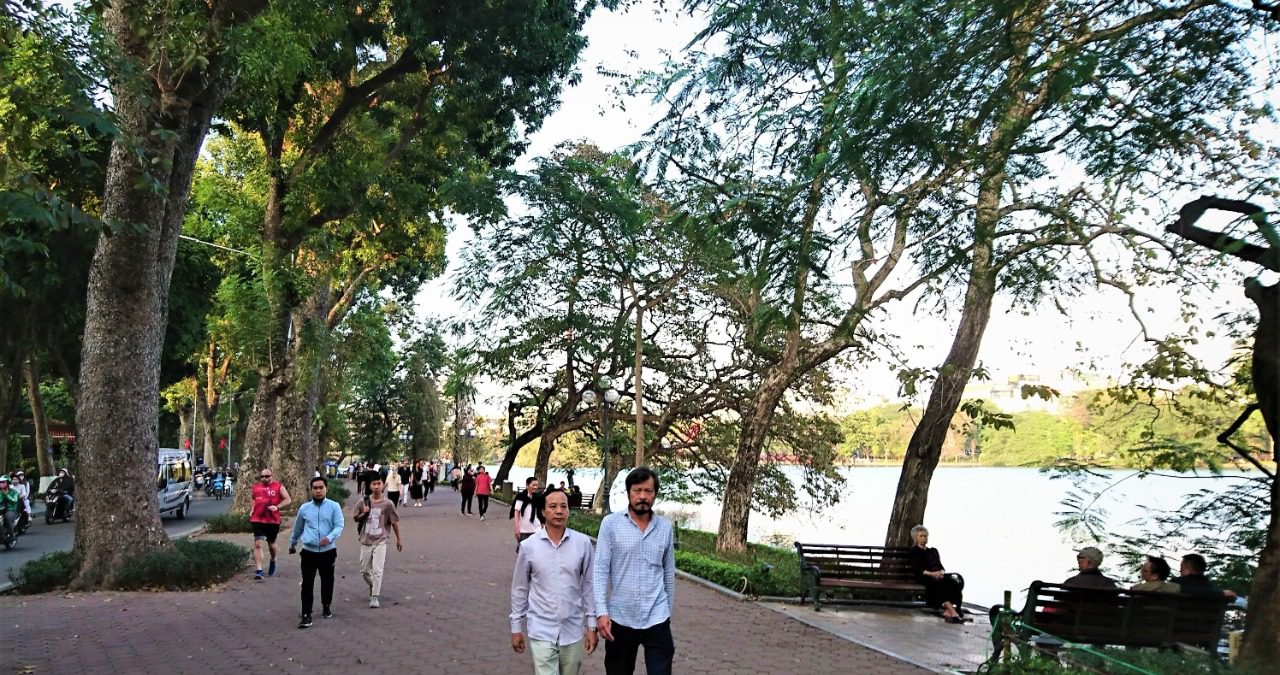
Keep up with our latest news and projects!

Walkability refers to the quality of walking environments — how accessible, safe, connected, comfortable and attractive a city’s public walking infrastructure is. When we talk about how walkable Asian cities are, we must take into account the continent’s vast cultural, geographical and climatic differences. What is walkable in Ulaanbaatar might not be so in Jakarta. However, there are fundamental policies and practices that can be adapted to any urban street and space.
Walkability is a reflection of the sustainability, liveability and health of a city; and knowing that in 2018 Asian towns and cities were home to 54% of the world’s urban population, making them more walkable is essential. Advantages include:
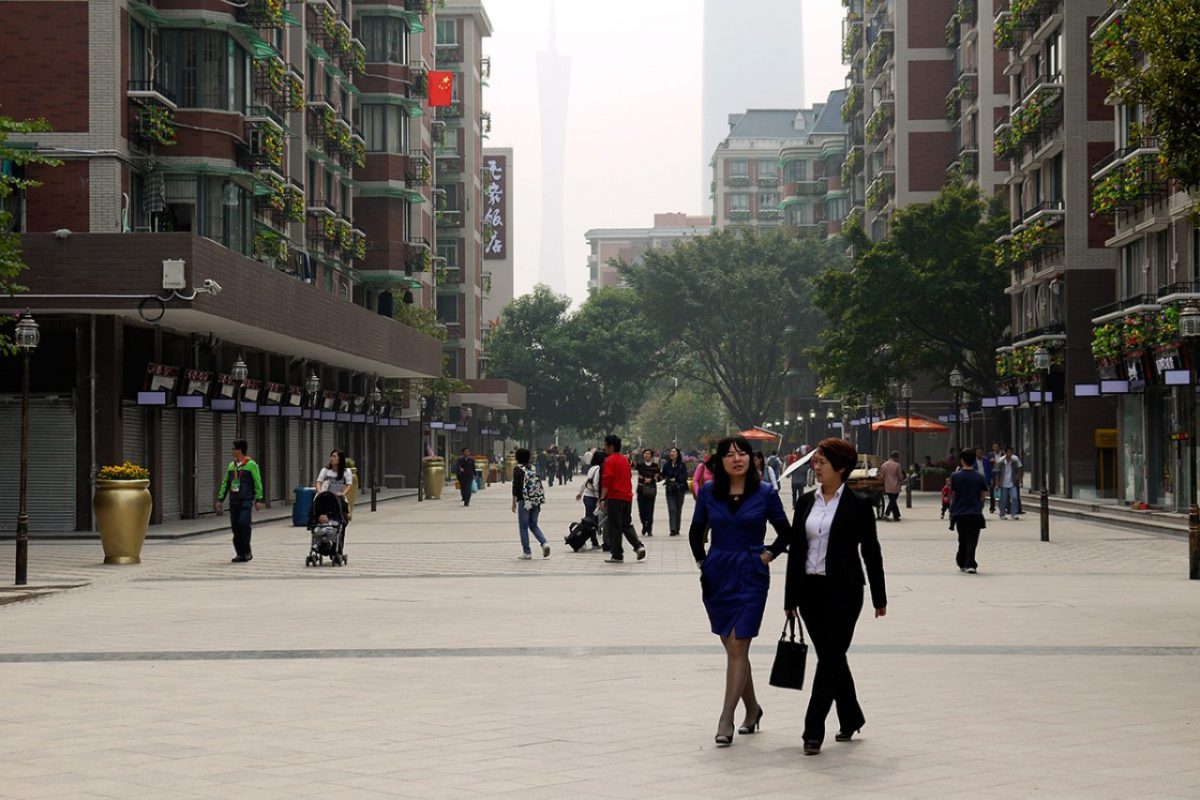
Asian cities are traditionally very walkable, with high population density and urban centers designed around walking. As the cheapest form of mobility, walking is essential for public transport, especially in poorer populations.
However, walking investment, policy and practice have generally been neglected in Asian cities, leading to poor walking environments, lack of connectivity, accessibility and safety. With motor vehicle infrastructure projects prioritised over people-focused development — combined with a general rise in private motor use across Asia (particularly low-mobility cities) and increases in ride-hailing ride services (cars and motorbikes) — the result is that more people have turned to privatised modes of transport.
Walkability studies by the Asian Development Bank in 2011 concluded that average walking ratings for Asian cities were low to medium. The research found that often commercial areas in Asian cities are more walkable; whereas public transport hubs and educational areas experience higher pedestrian volumes but are less walkable.
Nonetheless, some Asian cities are now increasingly investing in more walkable, healthy and sustainable streets and places. UN Environment Programme (UNEP) research in 2017 showed on average 83% of Asian countries had Non-Motorised Transport (NMT) commitments and 50% report on NMT; both being essential for enshrining walking at the national and city level.
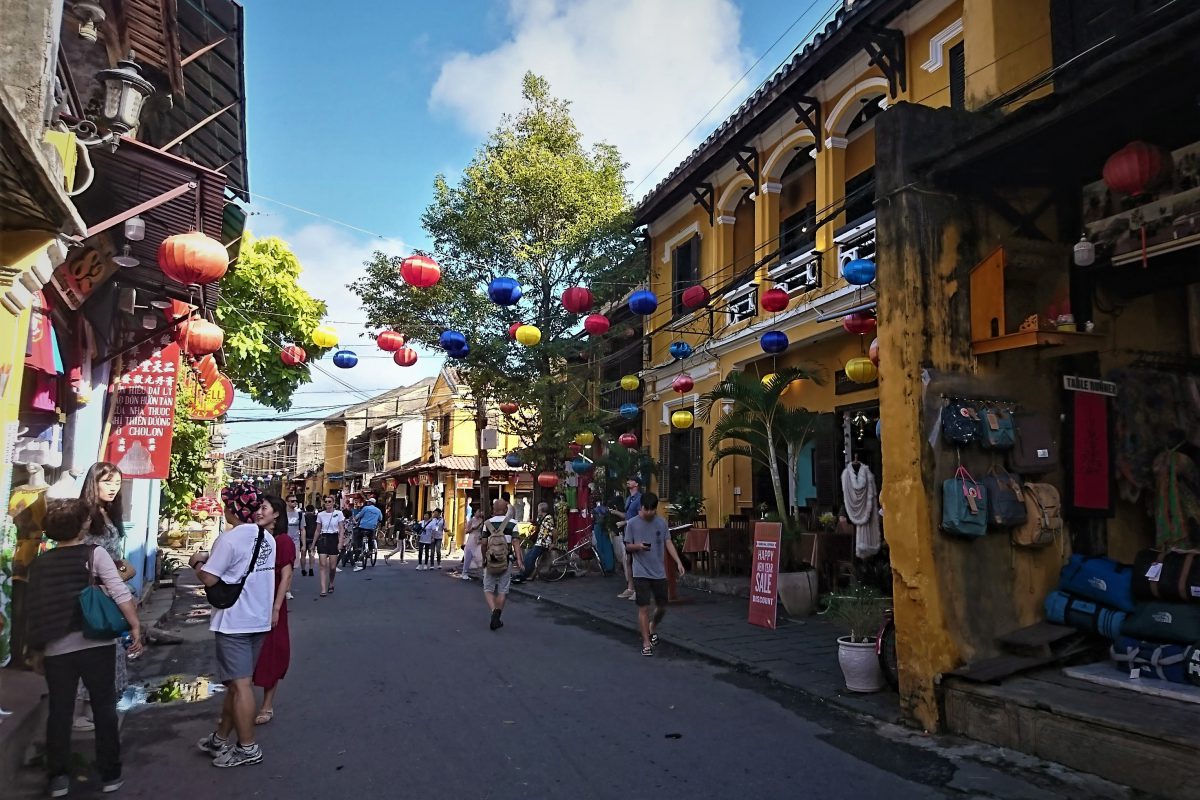 Traditionally walkable central Hoi An, Vietnam.
Traditionally walkable central Hoi An, Vietnam.
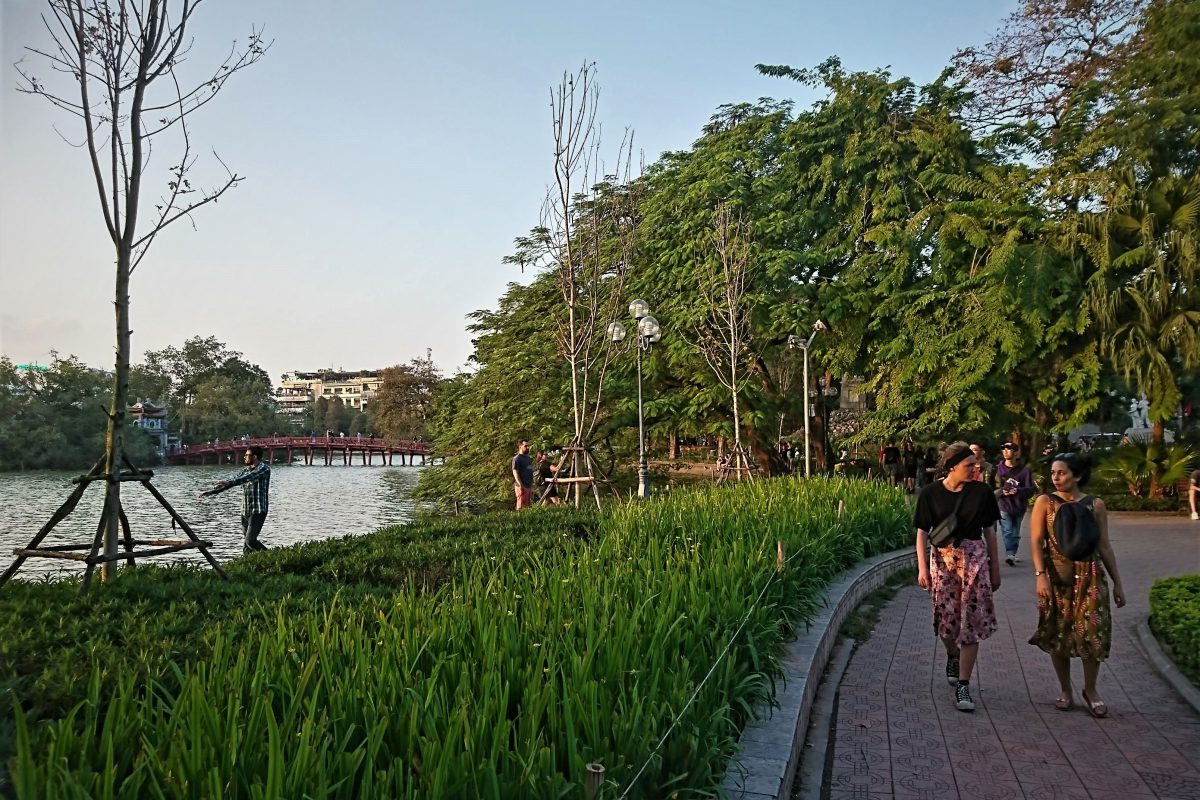 Hanoi’s walkable Hoàn Kiếm Lake footway.
Hanoi’s walkable Hoàn Kiếm Lake footway.
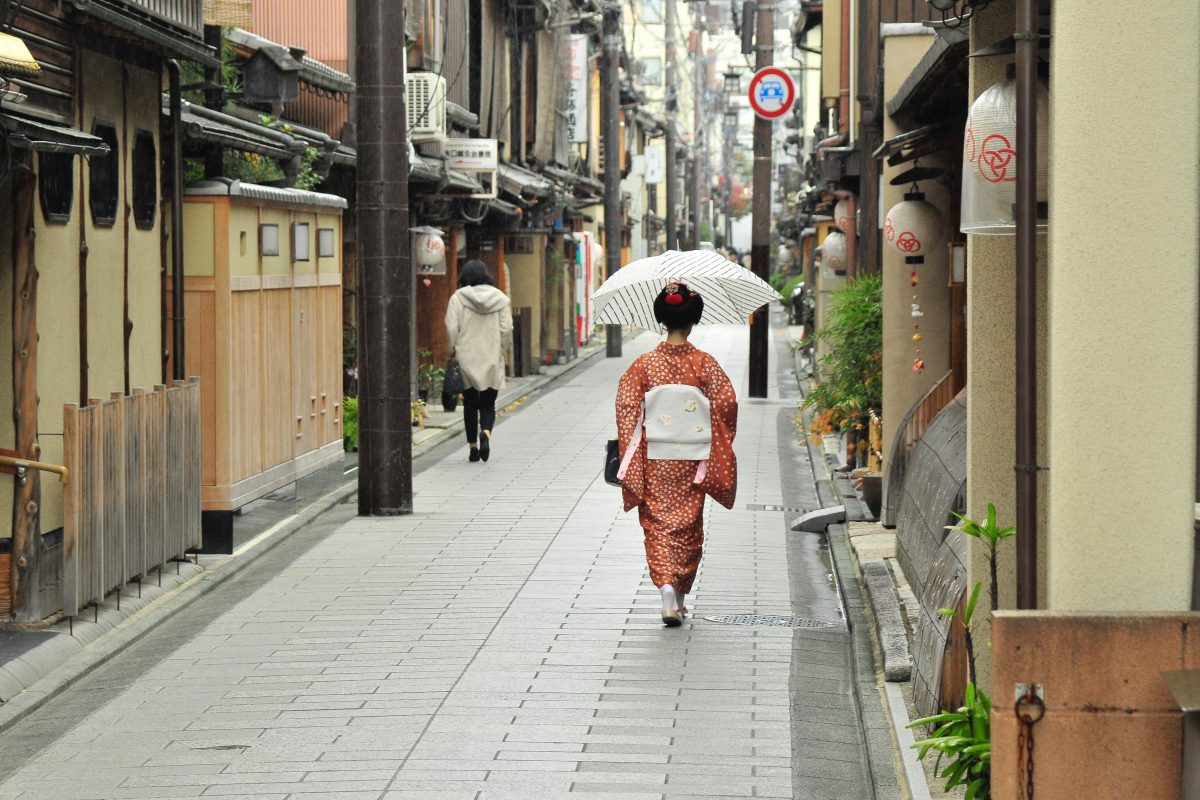 Pedestrianised residential street, Kyoto, Japan.
Pedestrianised residential street, Kyoto, Japan.
The following recommendations and Asian walking case studies are divided into strategic and street-focused interventions:
Strategic level:
1. Increase and protect space for walking using pedestrianisation, pedestrian priority and connecting central walking networks. Gradually reducing vehicle access and parking in central city areas and streets with high pedestrian flows will improve walking environments. Utilise modal filtering to restrict vehicle access. Engage with motoring and ride-hailing stakeholders when increasing pedestrian space.
Hanoi & Ho Chi Minh City (Vietnam) have created temporary and permanent car-free areas, which has hugely increased pedestrian numbers and revenue from tourism. The number of cultural events in Hanoi also shot up to 400.
2. Improve walking as part of public transport. When reducing private vehicle numbers, public transport and walking must be improved together. Walking routes to transport hubs can be improved by focusing on the first and last mile of walking journeys.
Thimpu (Bhutan) has created pedestrian-only days in the city and is aiming to improve footways to and from bus stops.
3. Integrate walking strategies into national and city-level planning that are ambitious, targeted and protect pedestrian rights in law. Ensure enforcement and compliance of motor vehicle rules e.g. stopping at crossings and not driving on footways. Walking infrastructure and projects must be budgeted for, aiming for 10-20% of the transport budget, as walking is often the least funded form of transport.
Kyoto (Japan) orientated their whole 2010 transport strategy around walking, reducing car trips, increasing public transport use and cutting emissions.
4. The most walkable areas have mixed land use. Integrate commercial, recreational, educational and residential areas with public transport hubs; interconnected with extensive walkable networks.
Liuyan Xiaogu district in Guangzhou (China) was transformed into a dense and mixed land use with excellent pedestrian networks by restricting vehicle access, creating walking-only streets and encouraging a diversity of land use.
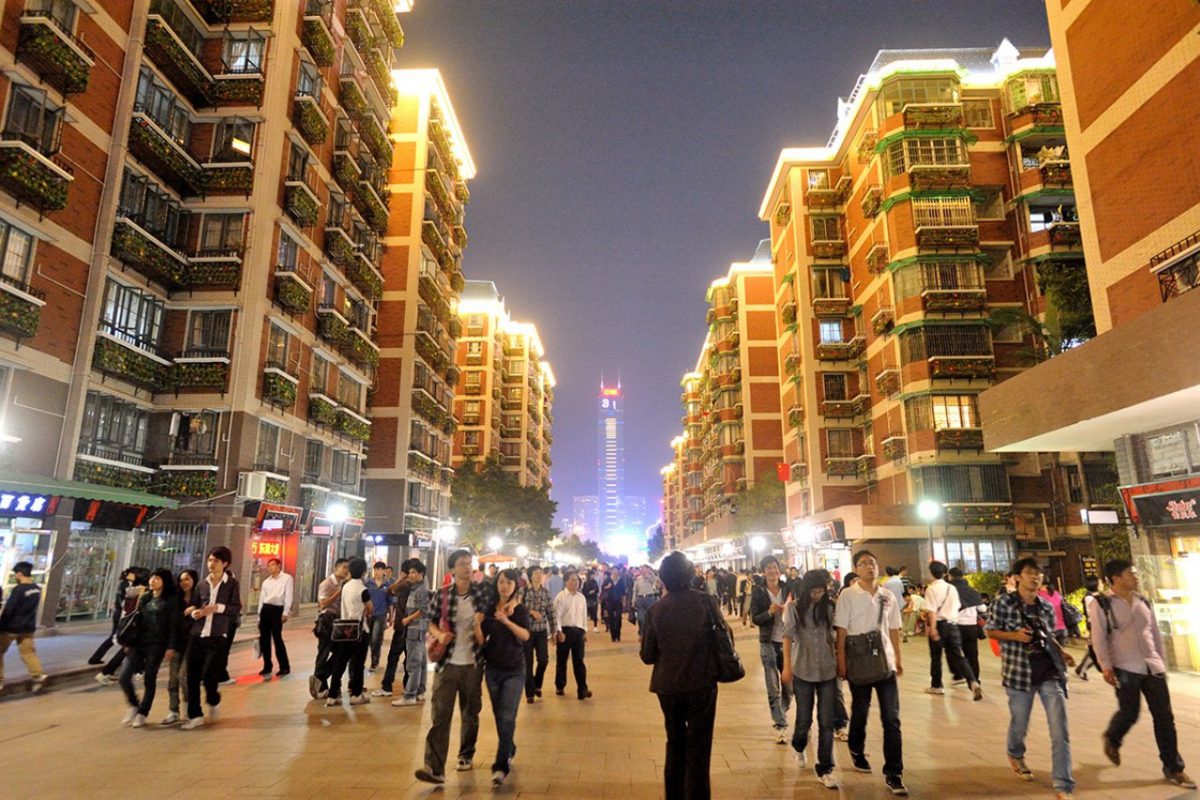
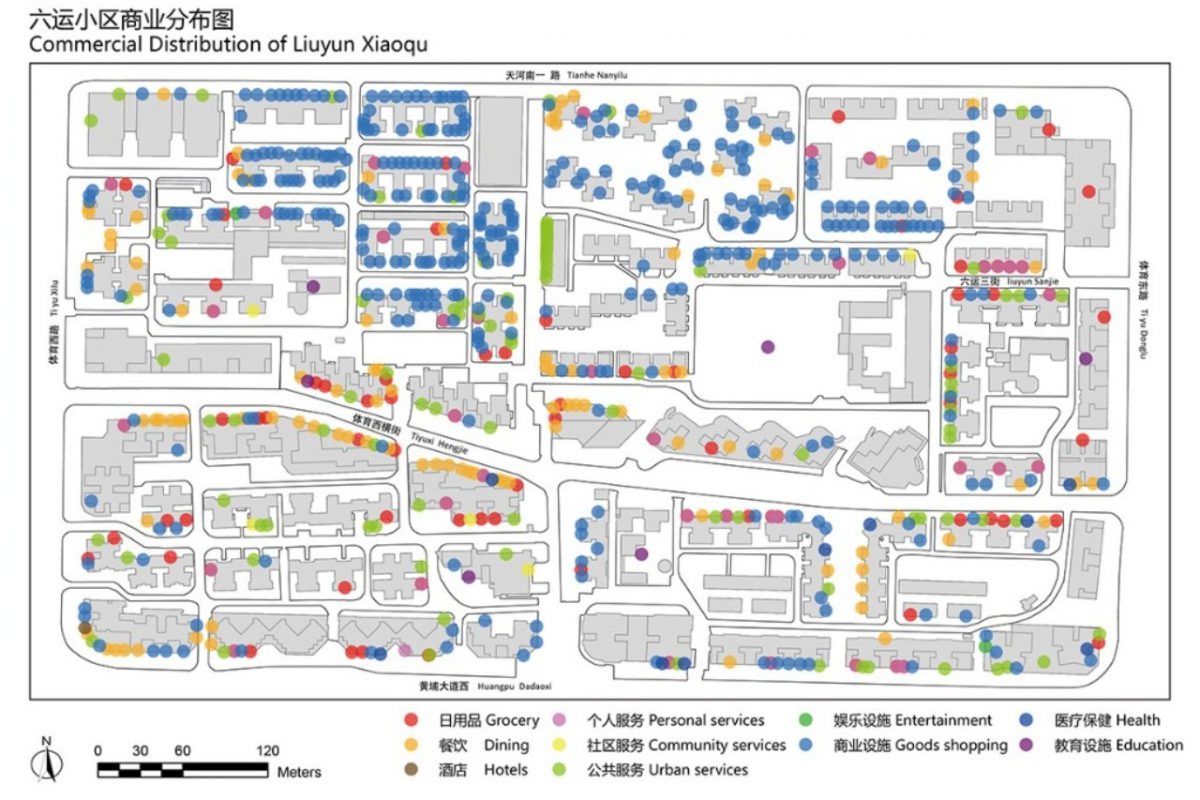
5. Walking design guidance ensures new streets and existing walking environments are improved to the same standard. Some basics include: aiming for 1.8m minimum footway widths; footways that are level, free of obstructions and segregated from vehicles; and safe accessible crossing points every 150m.
Pune Municipality (India) enshrined walking design in their ‘Urban Street Design Guidelines’ (2016), using it to transform pedestrian environments.
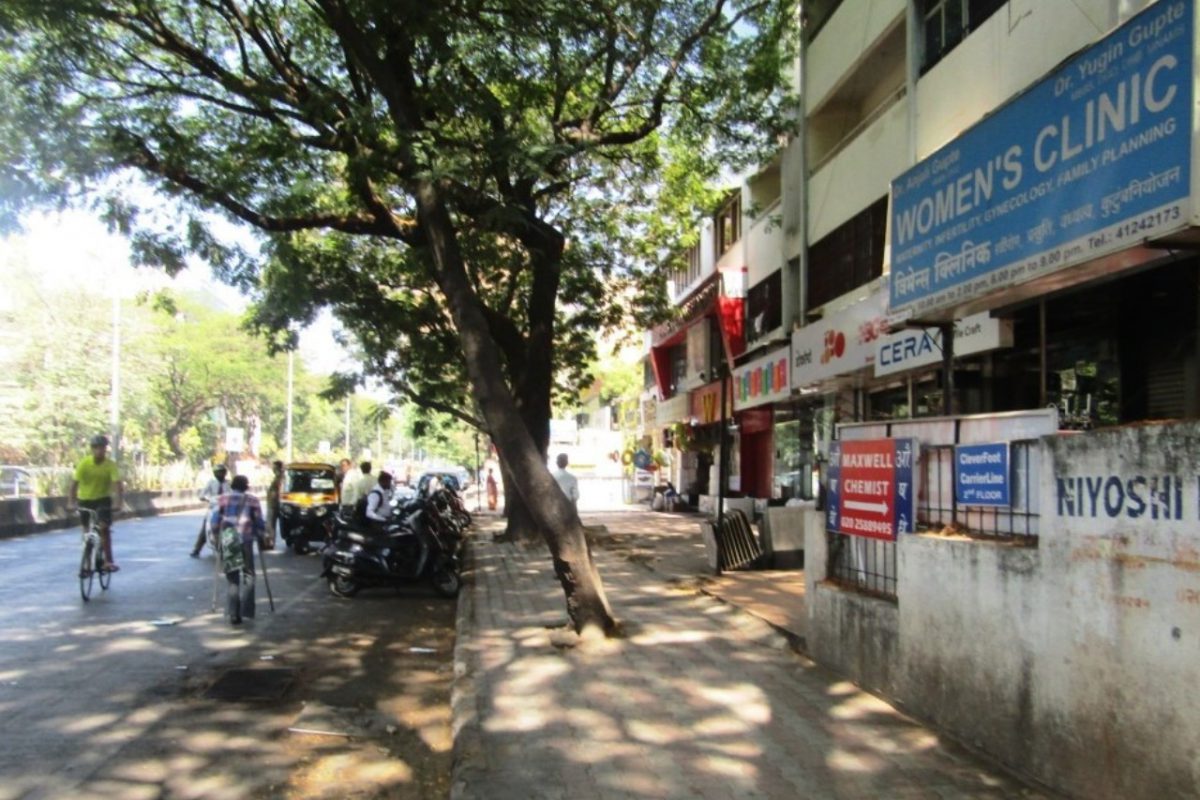 DP Road before pedestrian improvements, Pune, India.
DP Road before pedestrian improvements, Pune, India.
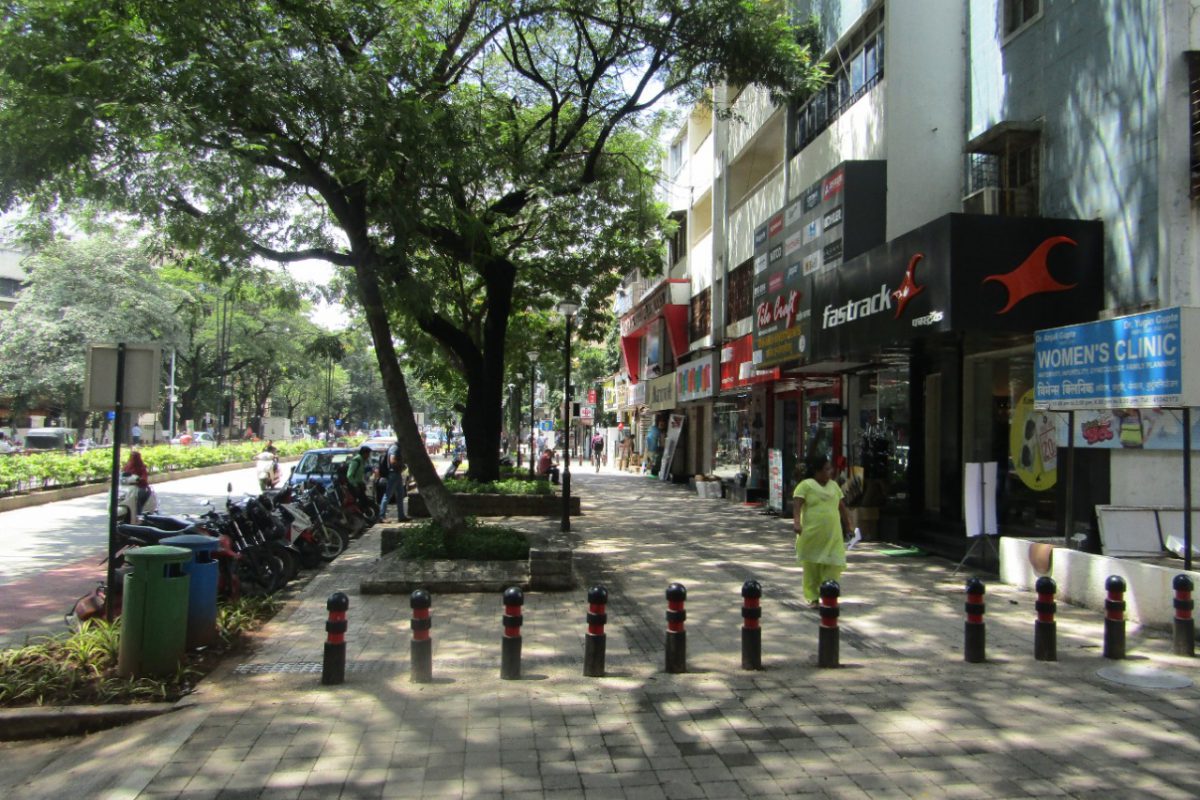 DP Road after pedestrian improvements, Pune, India.
DP Road after pedestrian improvements, Pune, India.
Street level:
1. Walkable means shade and shelter. Urban green space increases the likelihood of walking. People also walk shorter distances in hot climates, so green walking corridors and shelter is essential. Singapore provides covered walkways at pedestrian crossings, to and from public transit and housing developments; whilst it’s ‘Park Connector Network’ provides an extensive network of green walkways.
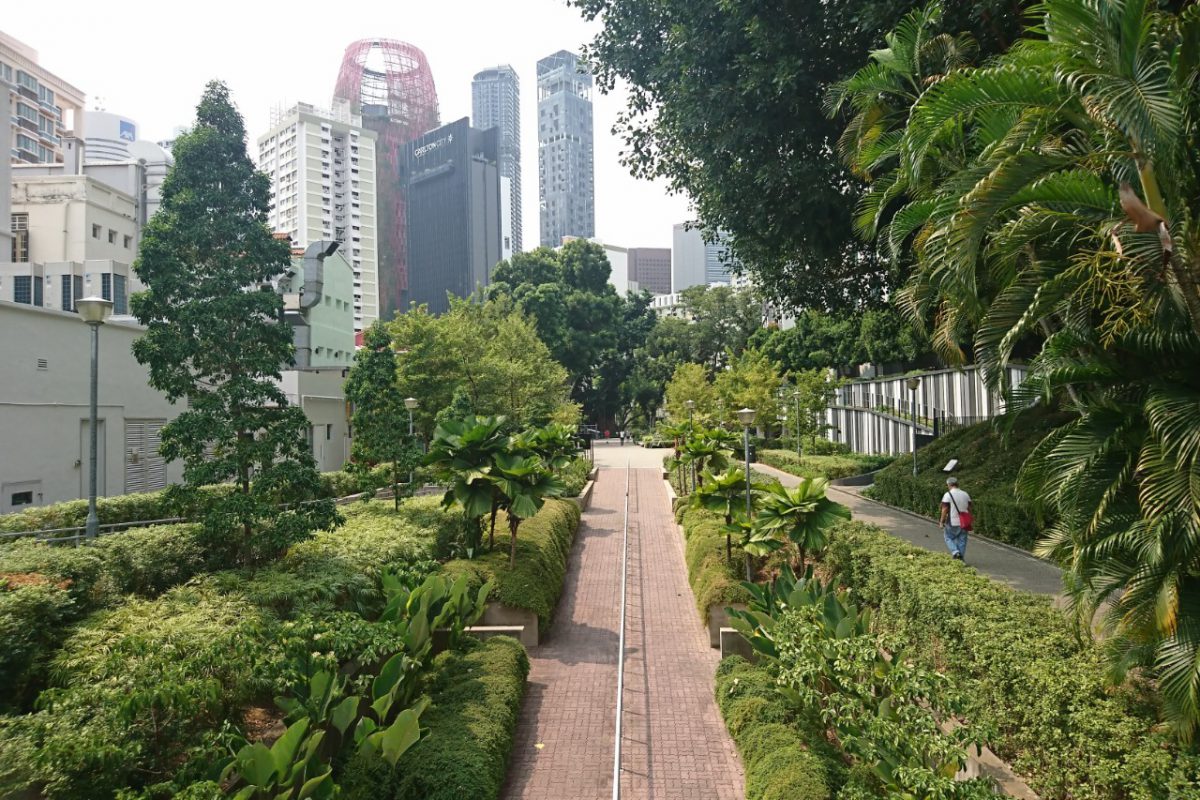 Creating a true city in a garden in Singapore.
Creating a true city in a garden in Singapore.
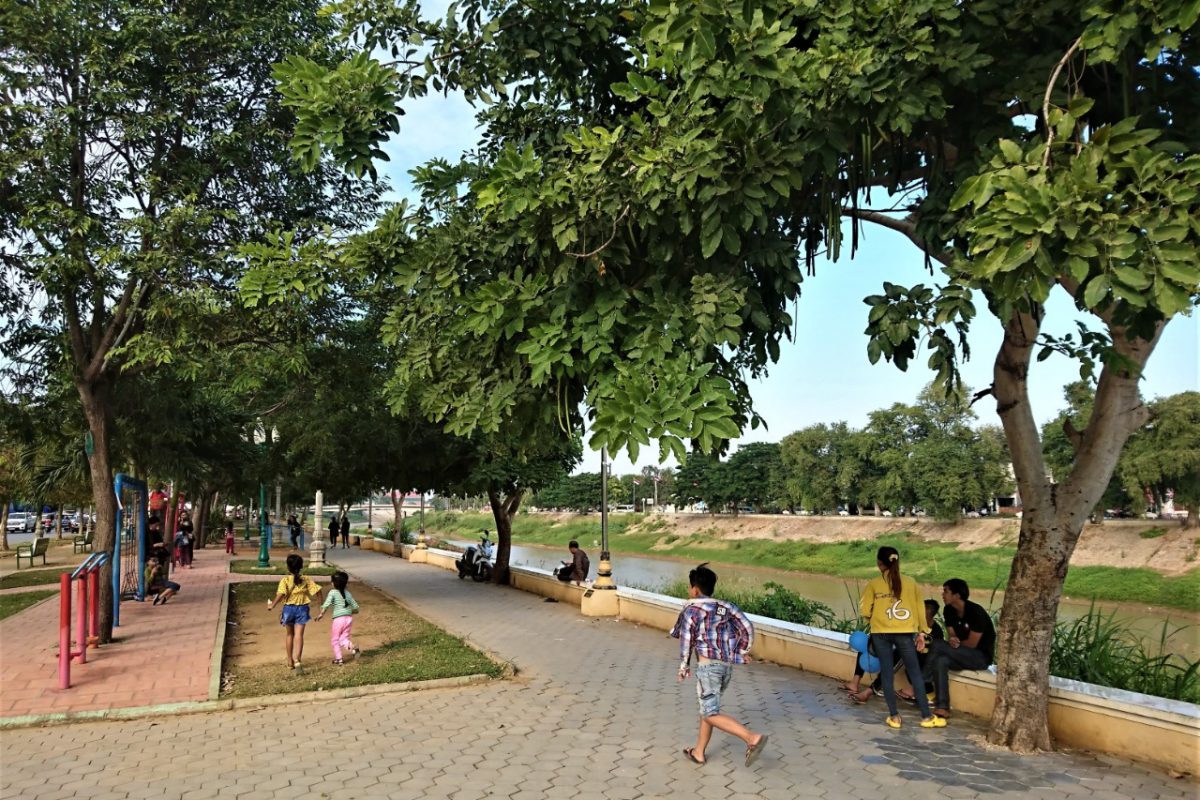 Space and place to relax, play and socialise in Battambang, Cambodia.
Space and place to relax, play and socialise in Battambang, Cambodia.
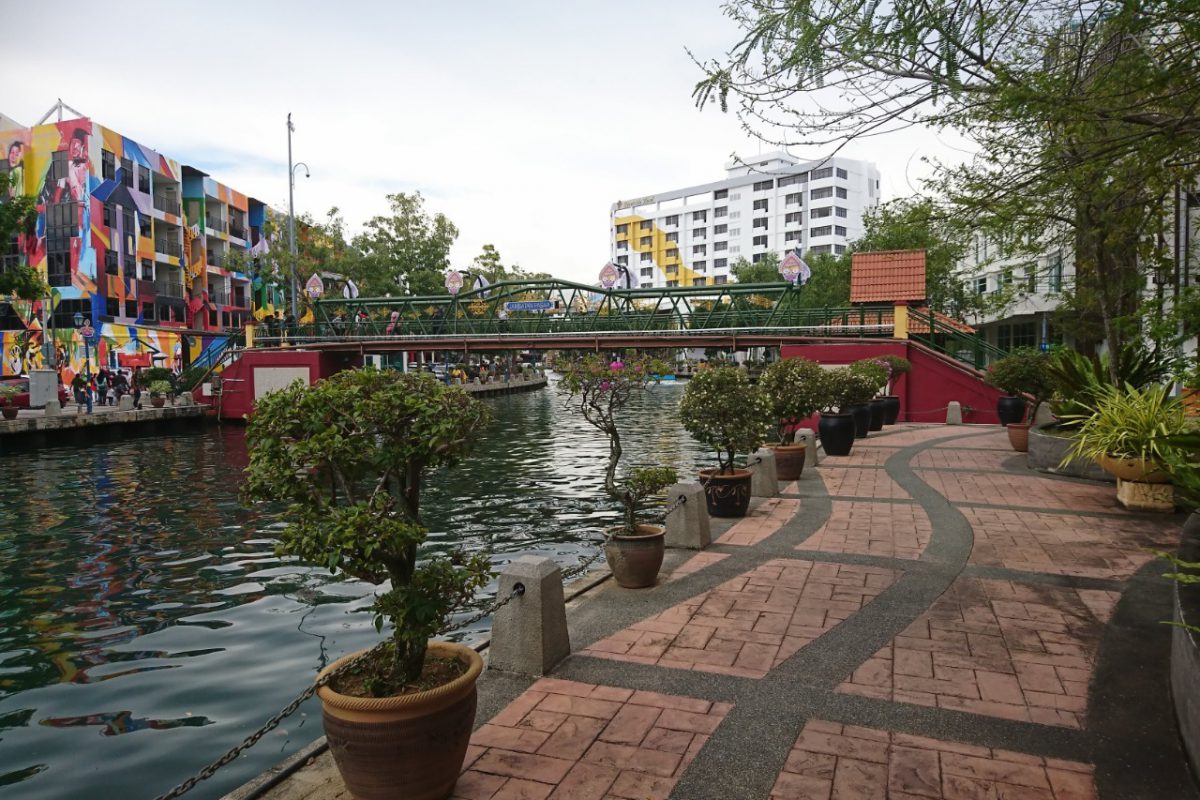 Improvements to both drainage and walkability in Melaka, Malaysia, have created attractive walking environments and places to spend time.
Improvements to both drainage and walkability in Melaka, Malaysia, have created attractive walking environments and places to spend time.
2. Ensure streets are active places. Asian streets are typically social spaces of informal business, community gatherings, play and spending time. Protecting these place functions will increase walkability. Maintain active frontages, provide seating, places for social gatherings and opportunities for informal business at the same time as walking space.
3. Make walking attractive. Create attractive off-street walking networks by taking advantage of existing infrastructure — waterfronts, green corridors, indoor walking routes and non-walking related projects.
Melaka (Malaysia) enhanced its walking network when improving flood and drainage systems along the central parts of Melaka river by enhancing accessible and attractive riverside walkways.
4. Make walking safe. Reduce speeds on roads (maximum 20mph / 30kmph on streets with high pedestrian volumes); use traffic calming measures and modal filters; ensure walkways are sufficiently lit; prioritise direct, safe and accessible walking routes and crossings; avoid pedestrian bridges (crossings at street level are more pedestrian friendly).
Bangkok’s (Thailand) Pedestrian safety training programme, supported by the World Bank, trained specialists and improved 8 km of roads. Improving pedestrian safety by increasing pedestrian space, crossing sizes and installing new traffic lights.
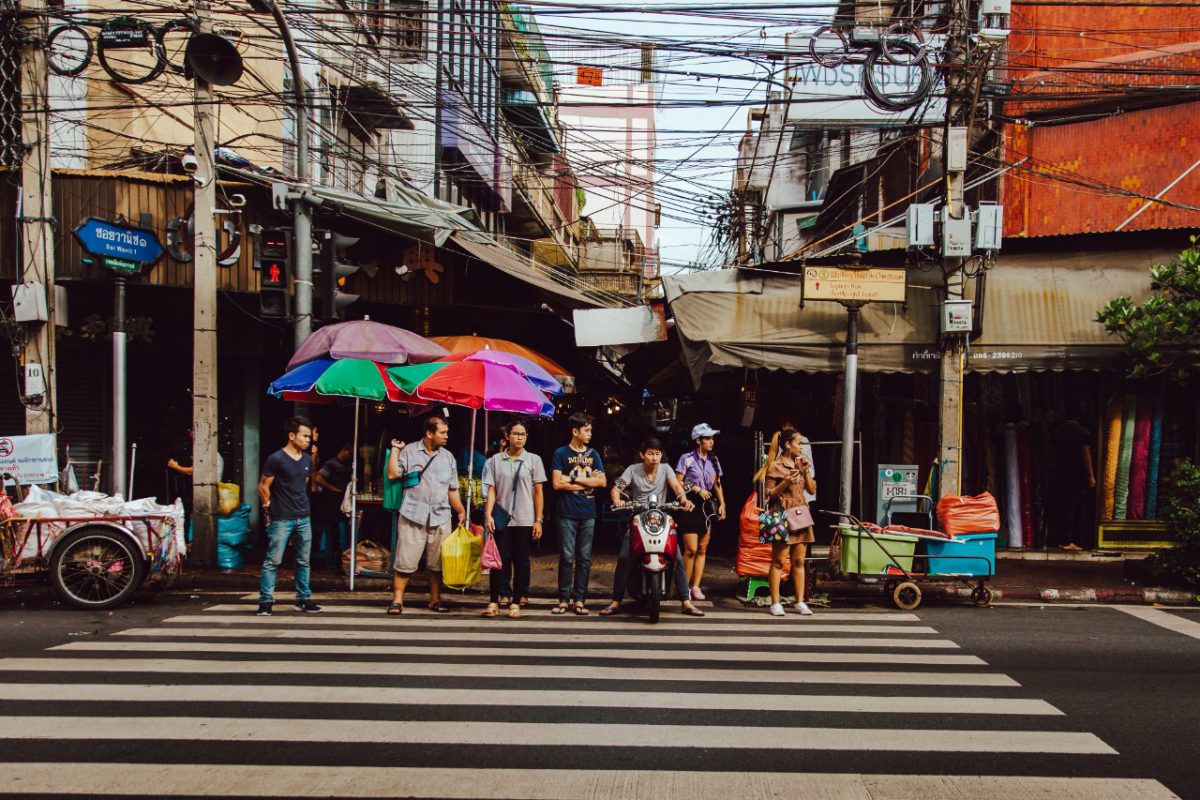 Crossing space, accessibility, priority and location are crucial to pedestrian safety in Bangkok, Thailand.
Crossing space, accessibility, priority and location are crucial to pedestrian safety in Bangkok, Thailand.
5. Use temporary tactical urbanism such as paint or street furniture to increase or create footways, pedestrian priority at crossings and improve aesthetics. Low in cost and quickly implemented with community engagement, results can justify more permanent interventions.
Kuala Lumpur & Melaka (Malaysia) have improved the aesthetics of central alleyways by adding art and furniture.
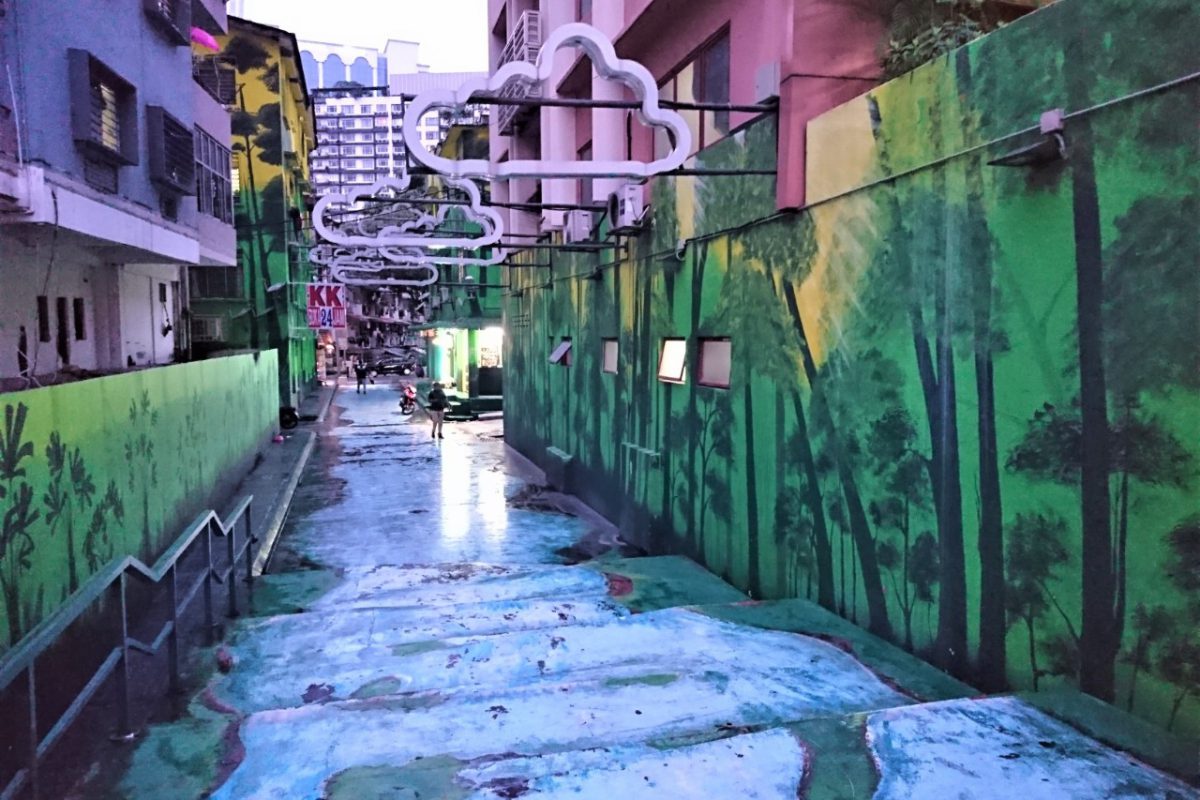 Brightening up Kuala Lumpur’s pedestrian alley- ways with art on all surfaces.
Brightening up Kuala Lumpur’s pedestrian alley- ways with art on all surfaces.
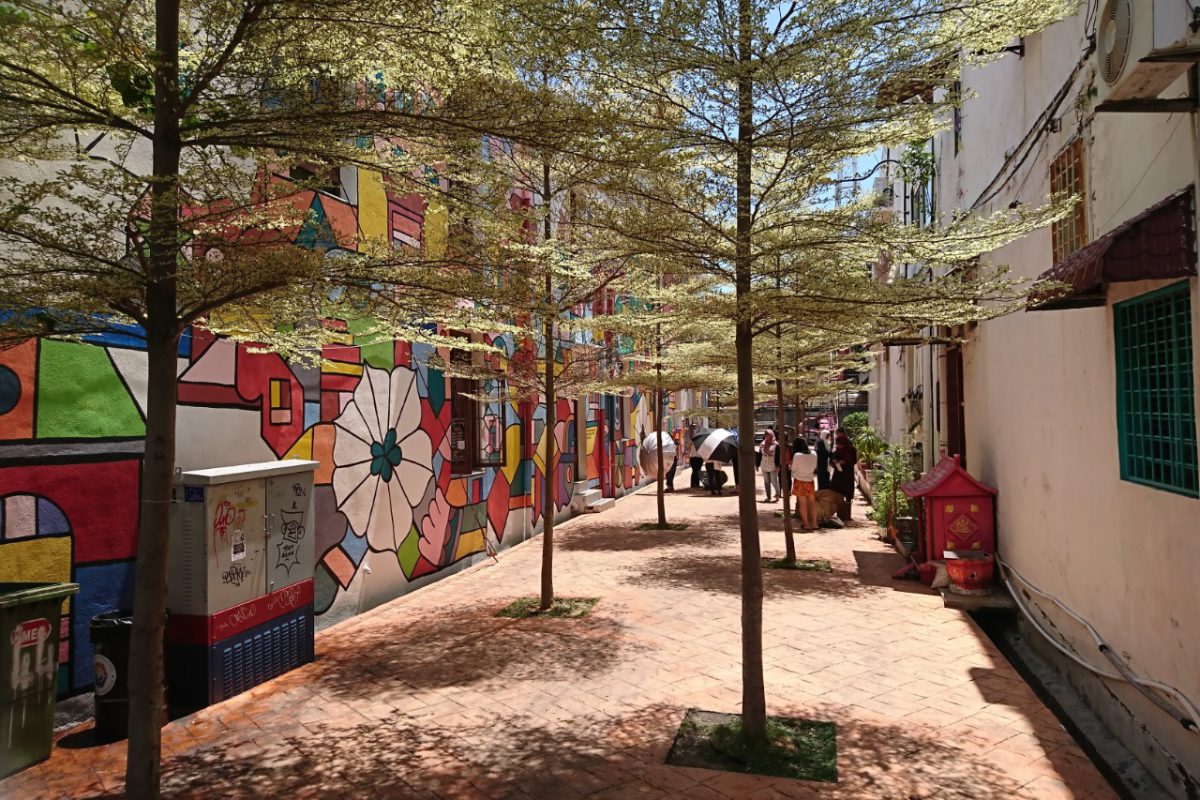 Mixing art and nature in Melaka, Malaysia.
Mixing art and nature in Melaka, Malaysia.
6. Maintaining walking environments is as important as new infrastructure and quick wins can be made at low cost. People notice when streets are maintained!
The little things matter — removing street clutter, repairing surfaces and street furniture, regular cleaning and maintenance.
7. Creating accessible cities for young and old is essential in both aging and young Asian populations. Children and older adults need more seating, young and old play areas, longer crossing times and amenities within shorter distances.
Singapore’s elderly-friendly ‘Silver Zones’ improve accessibility, provide safer crossings for older adults, increase seating and reduce vehicle speeds.
8. Corporate Social Responsibility (CSR) programmes can enhance urban walking environments. When conducted according to specific guidelines and rules that benefit pedestrians they can fill public funding gaps.
Malang (Indonesia) developed an urban green space CSR programme, enhancing the city’s walking environment through improving street parklets and greenways.
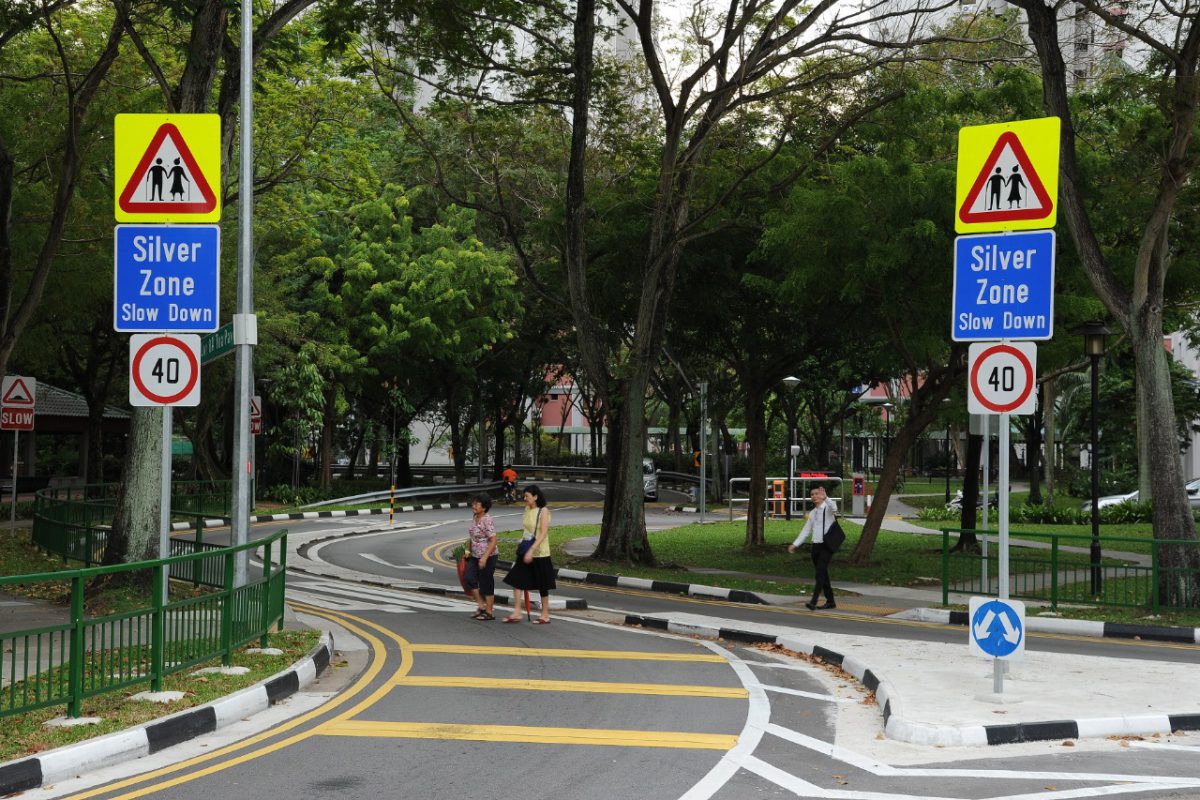 Creating more accessible walking environ- ments for older adults in Singapore.
Creating more accessible walking environ- ments for older adults in Singapore.
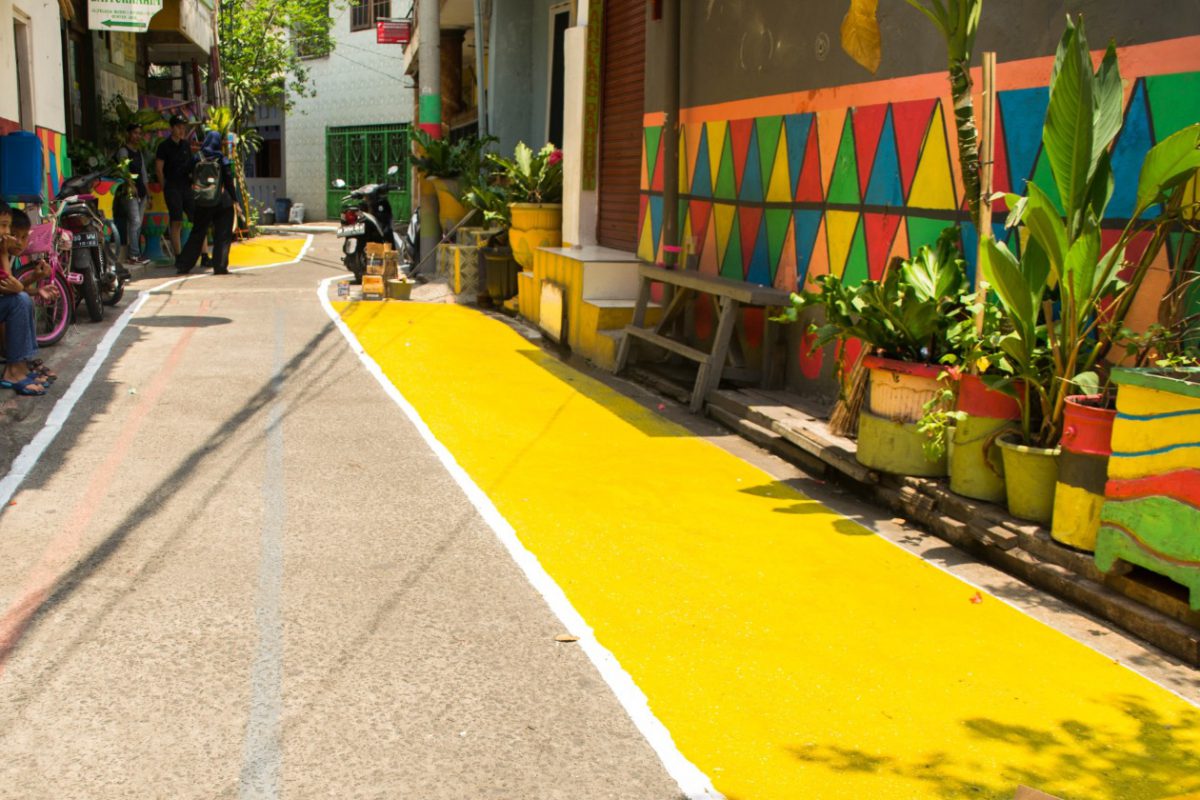 Using tactical urbanism and community engagement to create priority for people on Jakarta’s streets.
Using tactical urbanism and community engagement to create priority for people on Jakarta’s streets.
9. Work with local communities, residents and businesses (both formal and informal). Tailor initiatives to stakeholders’ needs through active participation, fostering ownership and support. Engage with vulnerable and less represented groups, including women and those with access requirements, to conduct audits and review walking environments.
In Jakarta (Indonesia), ITDP worked with residential communities improving pedestrian safety and priority by delineating pedestrian space using paint and greenery. This was enabled by engaging with the whole community; including women and school children who walk most in the area but are often not represented.